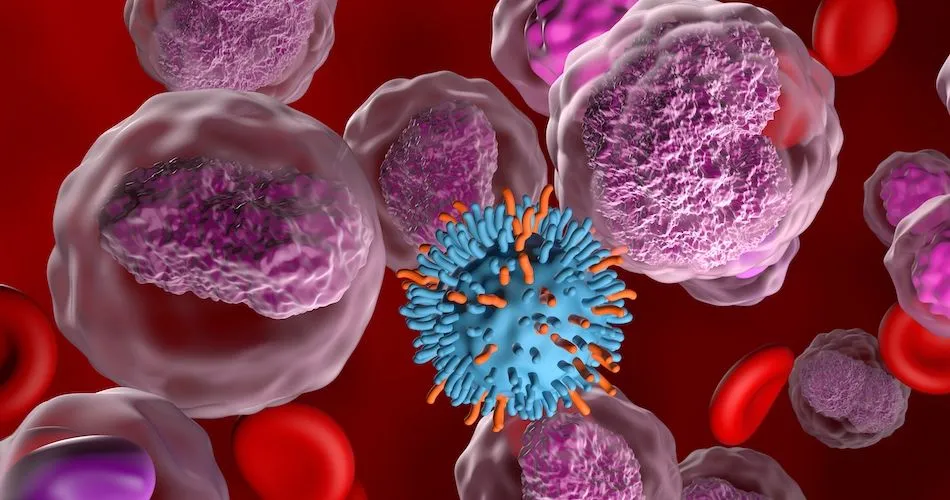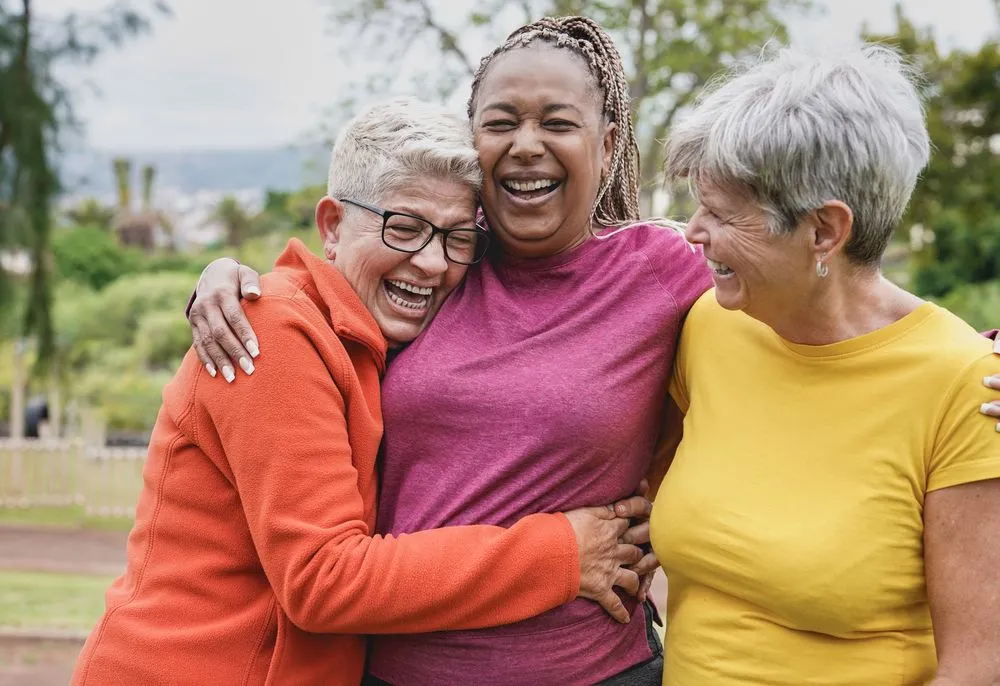ASH 2023: Contrasting Outcomes in Adult and Pediatric Centers for B-Cell Lymphoma Patients

Dr. David Bond, an Assistant Professor in the Division of Hematology at Ohio State University, recently presented collaborative research with Nationwide Children's Hospital, addressing a critical question in the area of lymphoma treatment. The study focused on young adult patients with mature B-cell lymphomas, like DLBCL, comparing treatment outcomes at adult and pediatric centers.
Treatment Site Transitions
In medical systems, patients typically transition from pediatric to adult centers around the age of 18. However, Dr. Bond and his team recognized that the treatment approaches for diseases like DLBCL differ significantly between adult and pediatric centers. This prompted the investigation into whether these differences translate into variations in side effects or outcomes for younger patients.
Study Details
This study included patients aged 12-39 years at diagnosis who were treated between 2011 and 2023 at Ohio State University Comprehensive Care Center (in the adult group) and Nationwide Children’s Hospital (in the pediatric group). All patients had aggressive mature B-cell lymphomas. Diagnoses included diffuse large B-cell lymphoma (DLBCL), double hit lymphoma (DHL), Burkitt lymphoma (BL), primary mediastinal B-cell lymphoma (PMBCL), grey zone lymphoma (GZL), and unclassifiable high-grade B-cell lymphoma (HGBCL).
Out of 180 patients, 156 adults were treated at Ohio State and the remaining 24 pediatric patients were treated at Nationwide Children’s Hospital. The median age was 30 years old. There were more males than females in both groups. A variety of standard treatments were received by the participants.
Notably, the findings revealed substantial differences in treatments, particularly for patients with DLBCL. These findings are summarized below:
- Adult centers tended to administer treatments associated with fewer short-term side effects compared to pediatric centers
- A greater incidence of unplanned hospitalization (79% pediatric vs 50% adult), grade 3 mucositis (38% vs 12%), febrile neutropenia, charaterized by fever and low blood counts (67% vs 44%), and fungal infections (25% vs 3%) were observed in the pediatric group
- Patients in the adult group were more likely to receive radiation therapy (26% vs 0%) and experience neuropathy, characterized by numbness or loss of function in nerves, at last follow-up (22% v 0%)
- Among all 180 patients, other side effects included depression/anxiety (93), heart failure (16), impaired kidney function (20), and secondary cancer (6)
- A 2 year progression-free survival follow up concluded that 88% of pediatric patients and 77% of adult patients did not have worsening disease
- A 2 year overall survival follow up concluded 96% of pediatric patients and 77% of adult patients were still alive
- For patients with DLBCL or DHL, there was better progression-free survival in the pediatric versus adult group
Importantly, despite these differences in treatment techniques and side effects, the study did not identify significant differences in the success of the treatments. Both adult and pediatric approaches led to good outcomes overall, emphasizing that the primary goal of effective treatment was achieved in both settings.
Pediatric vs Adult Standard of Care
The research by Dr. Bond and his team serves as a crucial step toward comprehensively understanding the implications of treatment sites on patient experiences and outcomes. The study not only highlights the effectiveness of these treatments but also emphasizes the need to address and manage side effects. These findings could inform future treatment strategies and contribute to refining the standard of care for young adult patients with mature B-cell lymphomas, like DLBCL, transitioning from pediatric to adult centers.
Dr. David Bond, an Assistant Professor in the Division of Hematology at Ohio State University, recently presented collaborative research with Nationwide Children's Hospital, addressing a critical question in the area of lymphoma treatment. The study focused on young adult patients with mature B-cell lymphomas, like DLBCL, comparing treatment outcomes at adult and pediatric centers.
Treatment Site Transitions
In medical systems, patients typically transition from pediatric to adult centers around the age of 18. However, Dr. Bond and his team recognized that the treatment approaches for diseases like DLBCL differ significantly between adult and pediatric centers. This prompted the investigation into whether these differences translate into variations in side effects or outcomes for younger patients.
Study Details
This study included patients aged 12-39 years at diagnosis who were treated between 2011 and 2023 at Ohio State University Comprehensive Care Center (in the adult group) and Nationwide Children’s Hospital (in the pediatric group). All patients had aggressive mature B-cell lymphomas. Diagnoses included diffuse large B-cell lymphoma (DLBCL), double hit lymphoma (DHL), Burkitt lymphoma (BL), primary mediastinal B-cell lymphoma (PMBCL), grey zone lymphoma (GZL), and unclassifiable high-grade B-cell lymphoma (HGBCL).
Out of 180 patients, 156 adults were treated at Ohio State and the remaining 24 pediatric patients were treated at Nationwide Children’s Hospital. The median age was 30 years old. There were more males than females in both groups. A variety of standard treatments were received by the participants.
Notably, the findings revealed substantial differences in treatments, particularly for patients with DLBCL. These findings are summarized below:
- Adult centers tended to administer treatments associated with fewer short-term side effects compared to pediatric centers
- A greater incidence of unplanned hospitalization (79% pediatric vs 50% adult), grade 3 mucositis (38% vs 12%), febrile neutropenia, charaterized by fever and low blood counts (67% vs 44%), and fungal infections (25% vs 3%) were observed in the pediatric group
- Patients in the adult group were more likely to receive radiation therapy (26% vs 0%) and experience neuropathy, characterized by numbness or loss of function in nerves, at last follow-up (22% v 0%)
- Among all 180 patients, other side effects included depression/anxiety (93), heart failure (16), impaired kidney function (20), and secondary cancer (6)
- A 2 year progression-free survival follow up concluded that 88% of pediatric patients and 77% of adult patients did not have worsening disease
- A 2 year overall survival follow up concluded 96% of pediatric patients and 77% of adult patients were still alive
- For patients with DLBCL or DHL, there was better progression-free survival in the pediatric versus adult group
Importantly, despite these differences in treatment techniques and side effects, the study did not identify significant differences in the success of the treatments. Both adult and pediatric approaches led to good outcomes overall, emphasizing that the primary goal of effective treatment was achieved in both settings.
Pediatric vs Adult Standard of Care
The research by Dr. Bond and his team serves as a crucial step toward comprehensively understanding the implications of treatment sites on patient experiences and outcomes. The study not only highlights the effectiveness of these treatments but also emphasizes the need to address and manage side effects. These findings could inform future treatment strategies and contribute to refining the standard of care for young adult patients with mature B-cell lymphomas, like DLBCL, transitioning from pediatric to adult centers.

about the author
Kat Richardson
Kat is from Lehi, Utah and is the education manager for lymphoma. She has worked in healthcare for a decade now, and earned her degree in community health education and promotion. Kat is passionate about disease prevention as well as improving quality of life and health equity. She enjoys reading, hiking, baking, ice skating, gardening, time with her family and friends, and most of all, spoiling her nieces and nephew.
More on Conferences
Trending Articles
Get the Latest Large B Cell Lymphoma Updates, Delivered to You.
By subscribing to the HealthTree newsletter, you'll receive the latest research, treatment updates, and expert insights to help you navigate your health.
Together we care.
Together we cure.
3x Faster.










